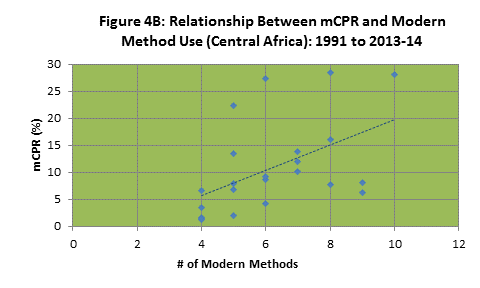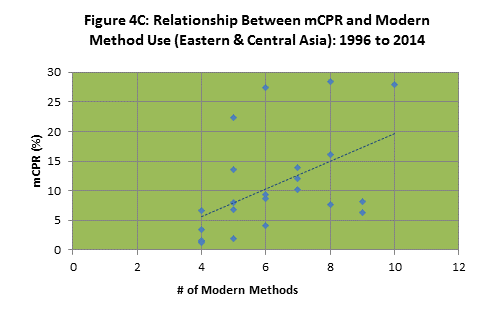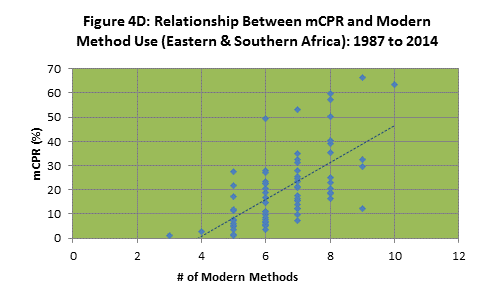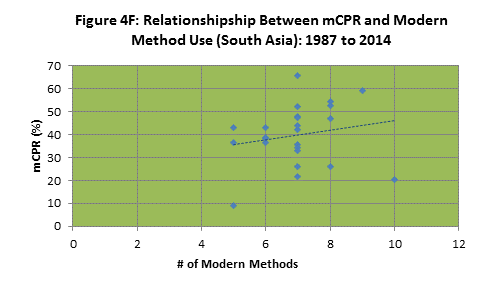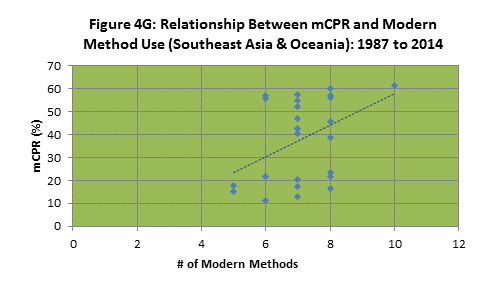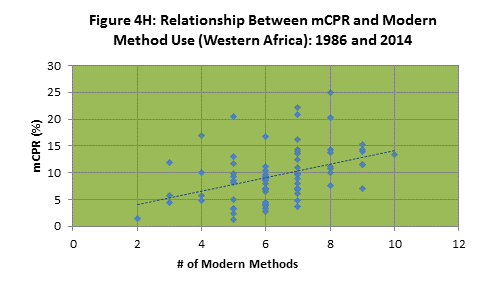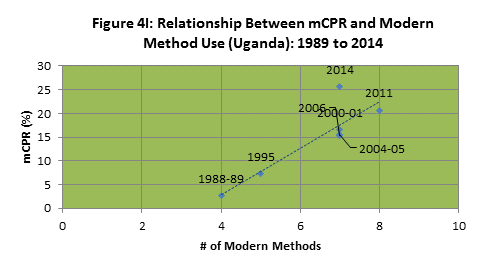The purpose of this analysis is to examine the relationship between modern contraceptive prevalence rates (mCPR) and the number of modern methods used by women of reproductive age. We used method-specific modern contraceptive prevalence data from all available DHS, MICS, PMA2020, and national reports from FP2020 countries. Globally and by region, we find a positive correlation between mCPR and the number of modern methods in the method mix.
Availability of a variety of contraceptive methods helps in meeting the individual needs of women and couples. A recent article by Ross and Stover[1] demonstrates that contraceptive use is greater when more methods are available to a large proportion of the population. The authors describe a positive association between modern contraceptive prevalence rates (mCPR; from representative national surveys) and the number of modern methods available (based on scores from the Family Planning Effort Index). Here, we examine the relationship between mCPR and the number of modern methods actually being used, based on method prevalence rates from nationally representative surveys.
The analyses on this page present the relationship between mCPR and the number of modern methods used, using data from all available DHS, MICS, PMA2020, and national reports for each country between 1986 and 2014. The method prevalence data for women currently using contraception (all and married, as available) was used to determine the number of modern methods being used in each country. A modern method was included if the method prevalence was greater than 0. Modern methods included in this analysis are: sterilization (female), sterilization (male), pill, IUD, implants, condom (male), condom (female), diaphragm/foam/jelly (combined), lactational amenorrhea method (LAM), and standard days method (SDM).
Figure 1 below presents data for mCPR and associated number of modern methods used from 275 surveys from 68 of the 69 FP2020 countries (there was no report data available for the Democratic People's Republic of Korea). The number of modern methods used in the FP2020 countries ranged from two to ten methods, and values for modern contraceptive prevalence (mCPR) ranged from 1% to 67%. Using a simple linear regression, this graph clearly shows a positive correlation between the mCPR and the number of modern methods in the method mix.
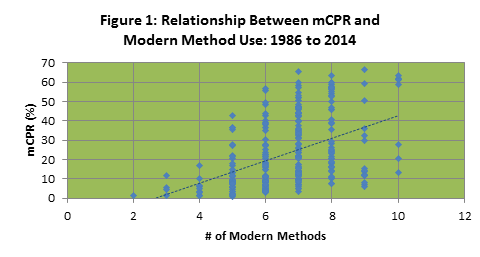
Figure 2 presents data for mean mCPR and associated number of modern methods used from each country. For each number of modern methods used, the unweighted mean of the mCPR values was calculated and plotted according to the corresponding number of modern methods. This plot displays that there is a positive correlation between the number of modern methods and the mCPR.
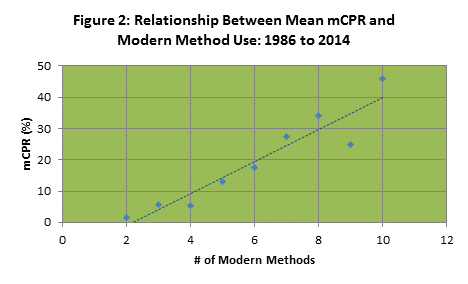
Figure 3 presents data for the mean mCPR by region. Western Africa and Central Africa had the lowest mean mCPRs (9.5% and 10.8%) while Eastern and Central Asia had the highest mCPR (43.4%). There is a 34% point difference between the mean mCPR for Western Africa and Eastern and Central Asia.
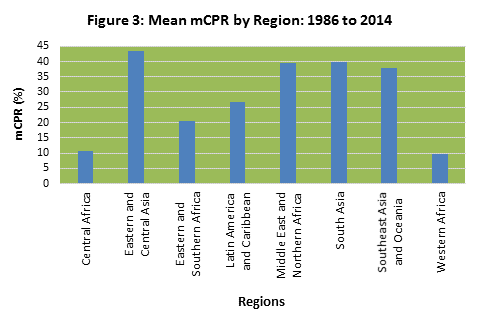
How does the association between mCPR and number of modern methods vary by geographical region? The subsequent eight graphs present the data for mCPR and number of modern methods by region, allowing for examination of geographical variation in the relationship.
Figure 4A presents data from four countries in Latin America and the Caribbean and includes 18 data points. Between the first and last survey years, 1989 and 2012, women and couples used between five and eight modern methods. The mCPR was the lowest in 1989 (Bolivia, 8%, DHS) and the highest in 2006-07 (Nicaragua, 47%, RHS). A linear regression on the data points reveals a positive correlation between mCPR and the number of modern methods in the method mix.
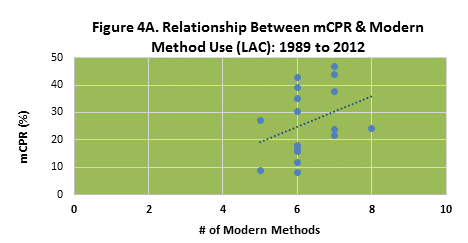
Countries included in this region: Bolivia, Haiti, Honduras, and Nicaragua
This analysis demonstrates a positive correlation between mCPR and the number of methods used by women and couples. The same positive association between mCPR and modern method use is seen on a global level, as well as when data are parsed by region. Clearly, overall modern contraceptive use is greater when there are larger numbers of methods being used at a given point in time. This analysis supports the findings of Ross and Stover, suggesting that women and couples are more likely to use modern contraception to prevent pregnancy if they have access to more types of modern methods.
[1] Ross J, Stover J. Use of modern contraception increases when more methods become available: analysis of evidence from 1982–2009. Glob Health Sci Pract. 2013;1(2):203-212. http://dx.doi.org/10.9745/GHSP-D-13-00010.
